Blog Customer FeedbackWhat is User Feedback and how to collect it?
What is User Feedback and how to collect it?
Researching user feedback and ways to collect it? We'll give you a comprehensive overview of the topic with real-world examples and showcase the best ways to capture feedback.

User feedback is fundamental for companies looking to build a great product - it helps you identify aspects that could be improved and figure out innovative ideas that you haven't yet thought about.
Almost every successful product is built by closely listening to users and their feedback, so getting this process right is essential.
However, with the quickly growing consumer expectations, the bar for a great user experience has gone up.
Therefore, understanding how you should deal with different types of feedback, and having a proper system in place to capture, organize, and close the feedback loop is more important than ever.
In this article, we'll give you a full overview of what user feedback is, what are the different types, and how you can level up your feedback game - from collection to closing the feedback loop.
So let's hop into it.
What is user feedback?
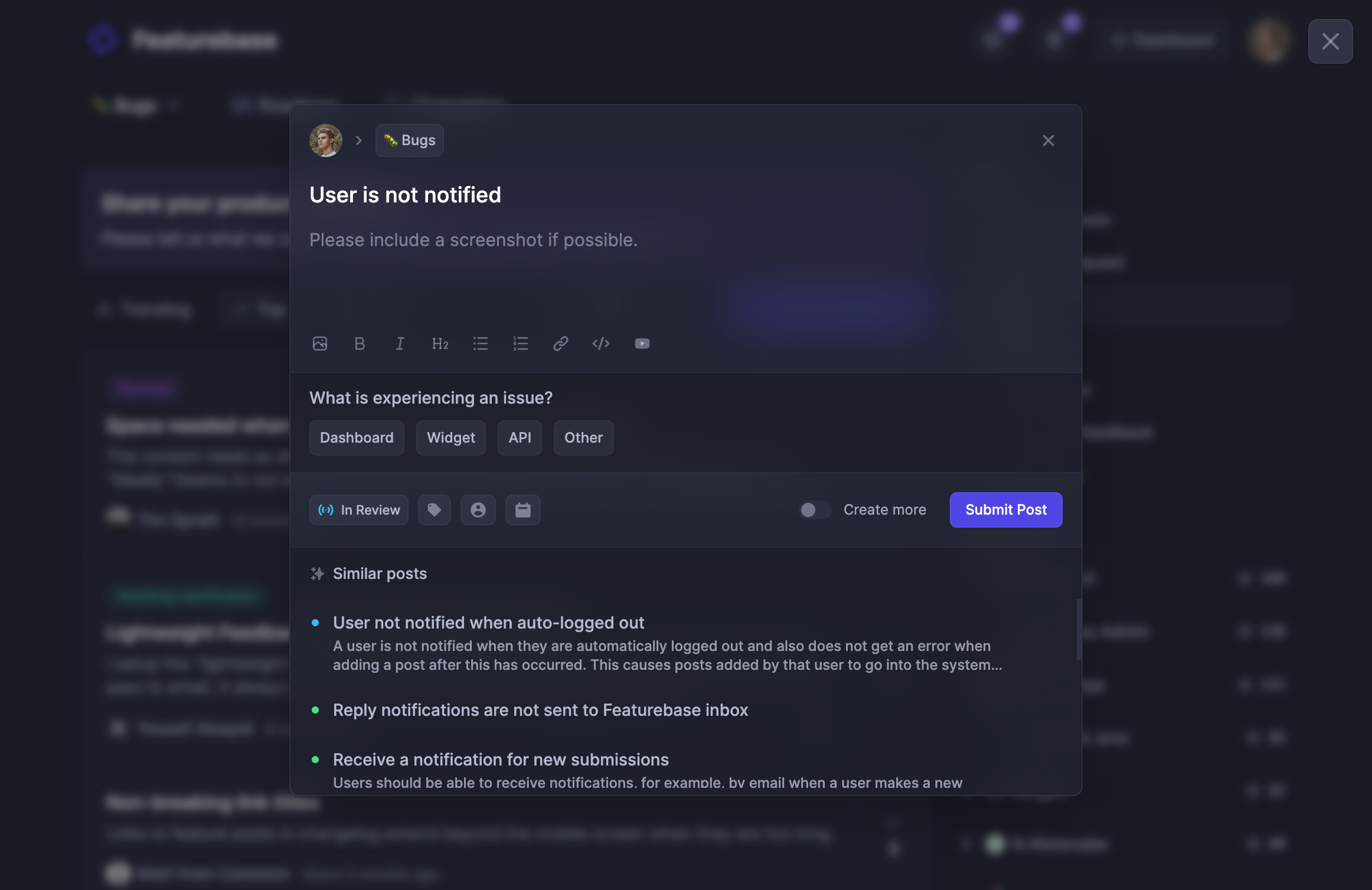
User feedback is the collection of opinions, ideas, problems, and suggestions provided by users about their experience with a product, service, or brand.
This feedback can take many forms, including comments on usability, satisfaction levels, bug reports, and ideas for new features or improvements.
It is a crucial source of information for businesses and organizations, offering detailed insights into what is working well and what areas require attention or redesign.
By systematically gathering and analyzing this feedback, companies can make informed decisions to enhance their offerings, tailor their user experience, and ultimately increase customer satisfaction and loyalty.
Why is user feedback so important?
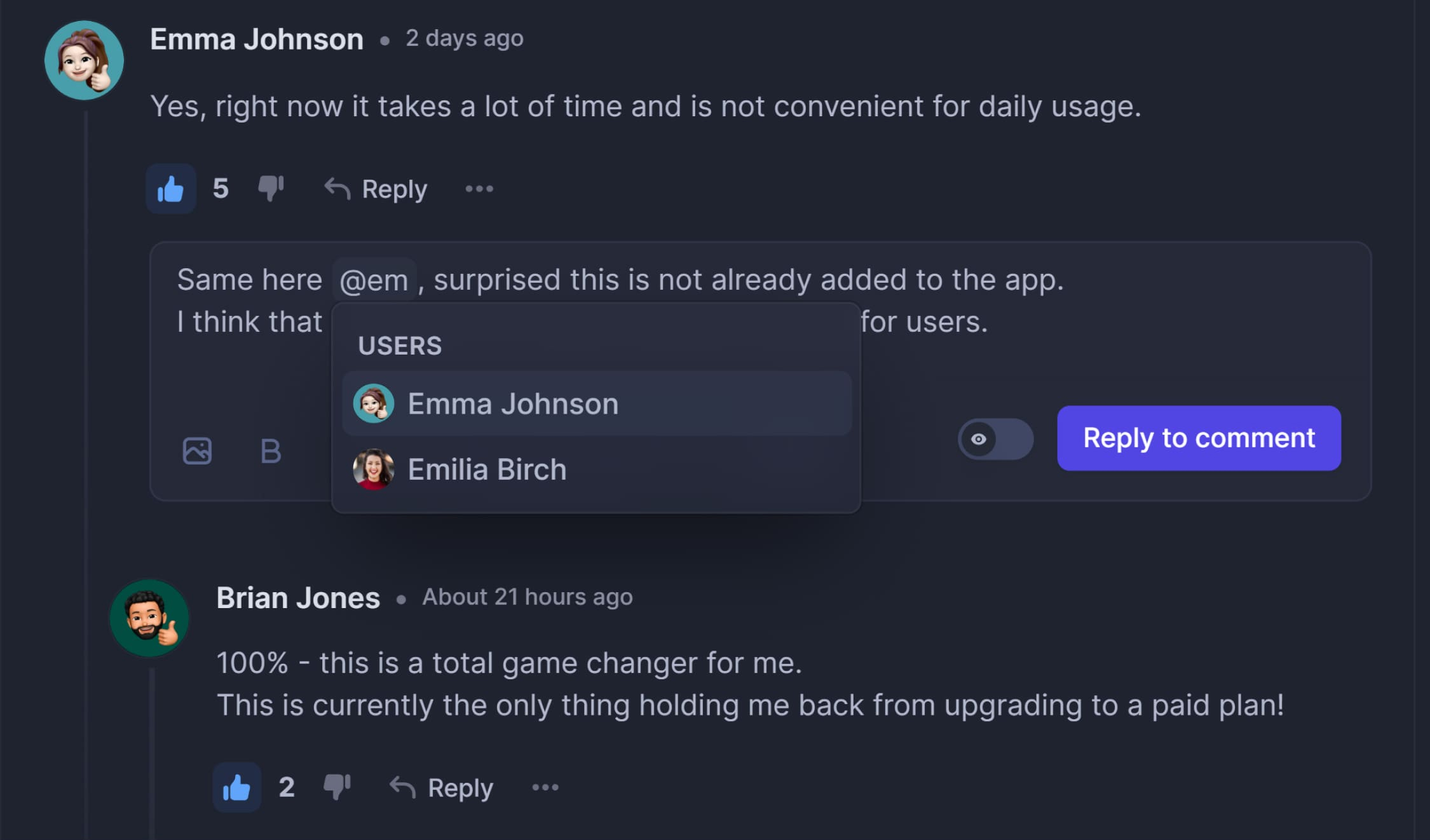
Collecting, listening, and acting on user feedback is one of the most important factors for businesses. But why is that?
Listening to your users provides direct insight into what people who actually use your product think about it.
This information is invaluable because it highlights not just the strengths but, more importantly, the areas that need improvement.
User feedback also plays a crucial role in building customer loyalty and trust.
When customers see that their opinions are valued and acted upon, they're more likely to develop a sense of attachment and loyalty to the brand.
In addition to setting your company apart from the competition, it also functions as a goldmine of ideas for new features, products, or services.
Users often provide suggestions that a business might not have considered, offering fresh perspectives that can lead to innovative solutions and new directions for growth.
In summary, user feedback is vital because it offers direct insights into customer satisfaction, guides product development, builds loyalty, offers a competitive edge, and encourages innovation.
What are the different types of user feedback?
When diving into the world of user feedback, you'll find a wide variety of information that can guide your product development.
Here are the top types of user feedback you're likely to encounter and should pay close attention to:
1. Feature Requests
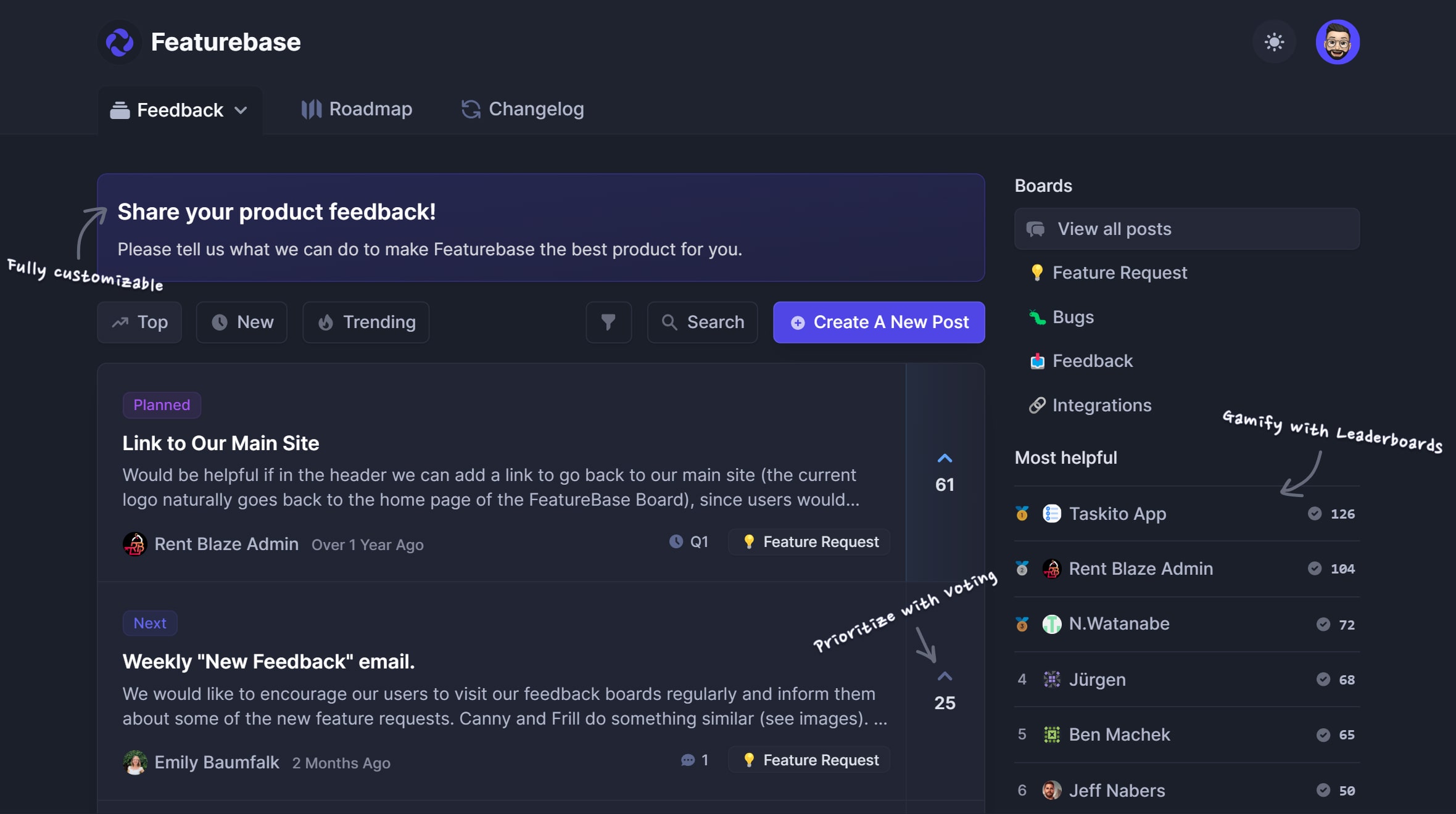
Feature requests are direct suggestions from users about new features they'd like to see in your product or improvements to existing features.
These ideas are incredibly valuable because they come straight from the people using your product, indicating what could make it more useful or enjoyable for them.
Paying attention to these requests helps you a lot with prioritizing development efforts and making sure your solutions directly meet user needs.
2. NPS (Net Promoter Score)

The Net Promoter Score is a widely used metric that measures customer loyalty and overall satisfaction with your product or service.
It's derived from a single question: "On a scale of 0-10, how likely are you to recommend our product/service to a friend or colleague?"
Based on their responses, customers are categorized as promoters, passives, or detractors.
NPS and its alternatives give you a clear picture of your company's performance from the customer's perspective and can guide improvements in customer experience. There are also lots of alternatives you could pick from.
3. Bug Reports
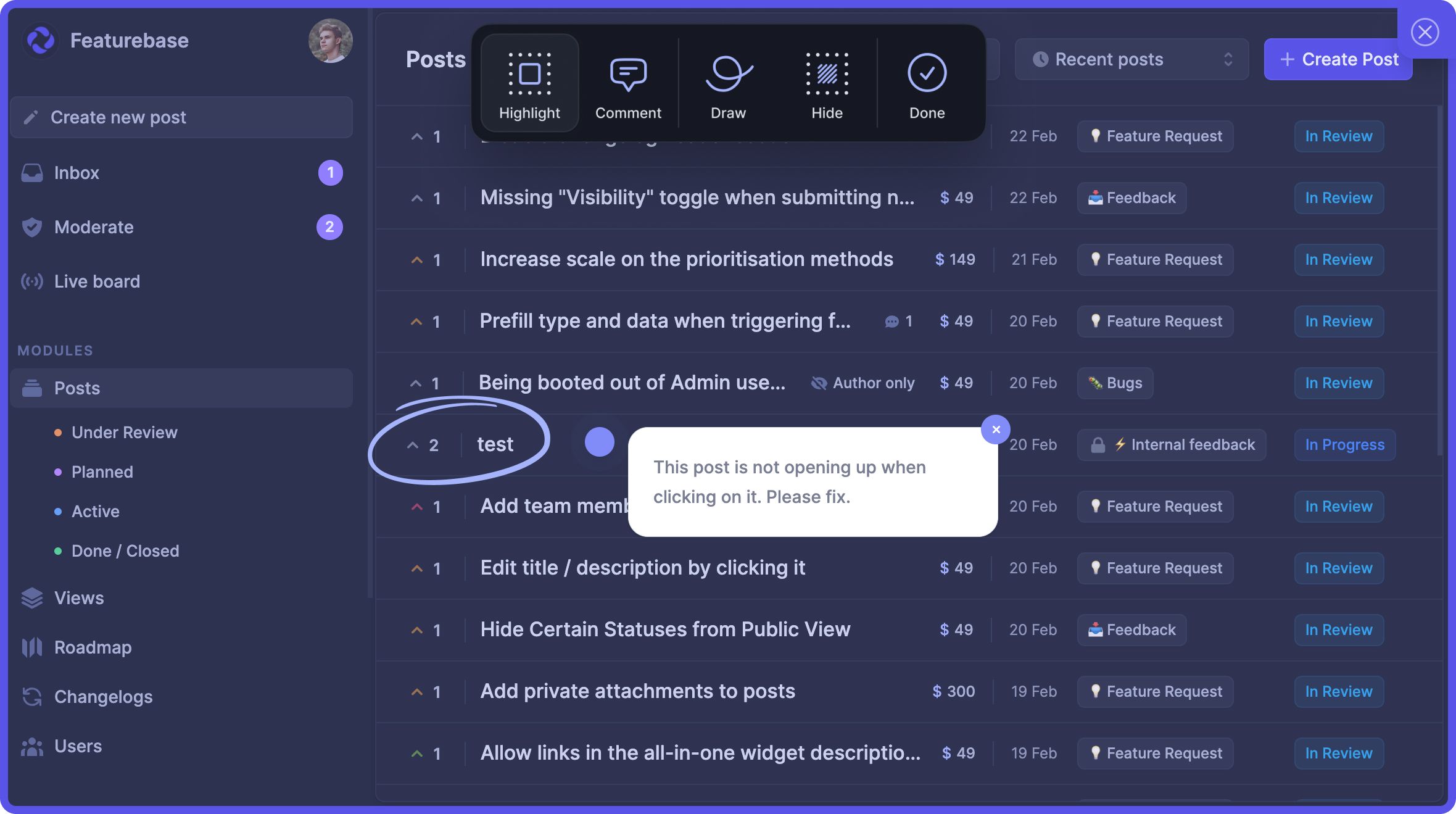
Bug reports are very important - they point out the issues or glitches within your product that negatively affect the user experience.
Users submit these reports when they encounter a problem, helping product managers identify and fix bugs that might not have been caught during testing. There are many powerful bug-tracking tools on the market that help with this.
Addressing bug reports promptly improves product quality and shows your users that their feedback is valued and taken seriously. Check out our detailed guide on prioritizing bugs and features.
4. New Release Feedback

Whenever you launch a new feature, update, or version of your product, gathering feedback on this new release is crucial.
Effective product announcements help you understand how well the new addition meets user expectations and what impact it has on their experience.
This type of feedback can reveal unforeseen issues and inform future iterations or updates.
5. CSAT (Customer Satisfaction Score)
The Customer Satisfaction Score is a straightforward measure of how satisfied users are with your product or service. It's usually obtained by asking a single question, such as "How satisfied are you with our product/service?" with a corresponding rating scale.
CSAT scores help you understand overall user satisfaction and identify areas that need improvement to enhance the customer experience.
Each of these feedback types provides unique insights into your users' experiences and perceptions.
By actively collecting and analyzing these different forms of feedback, you can make informed decisions that lead to a better product and a stronger relationship with your customers.
How to collect user feedback?
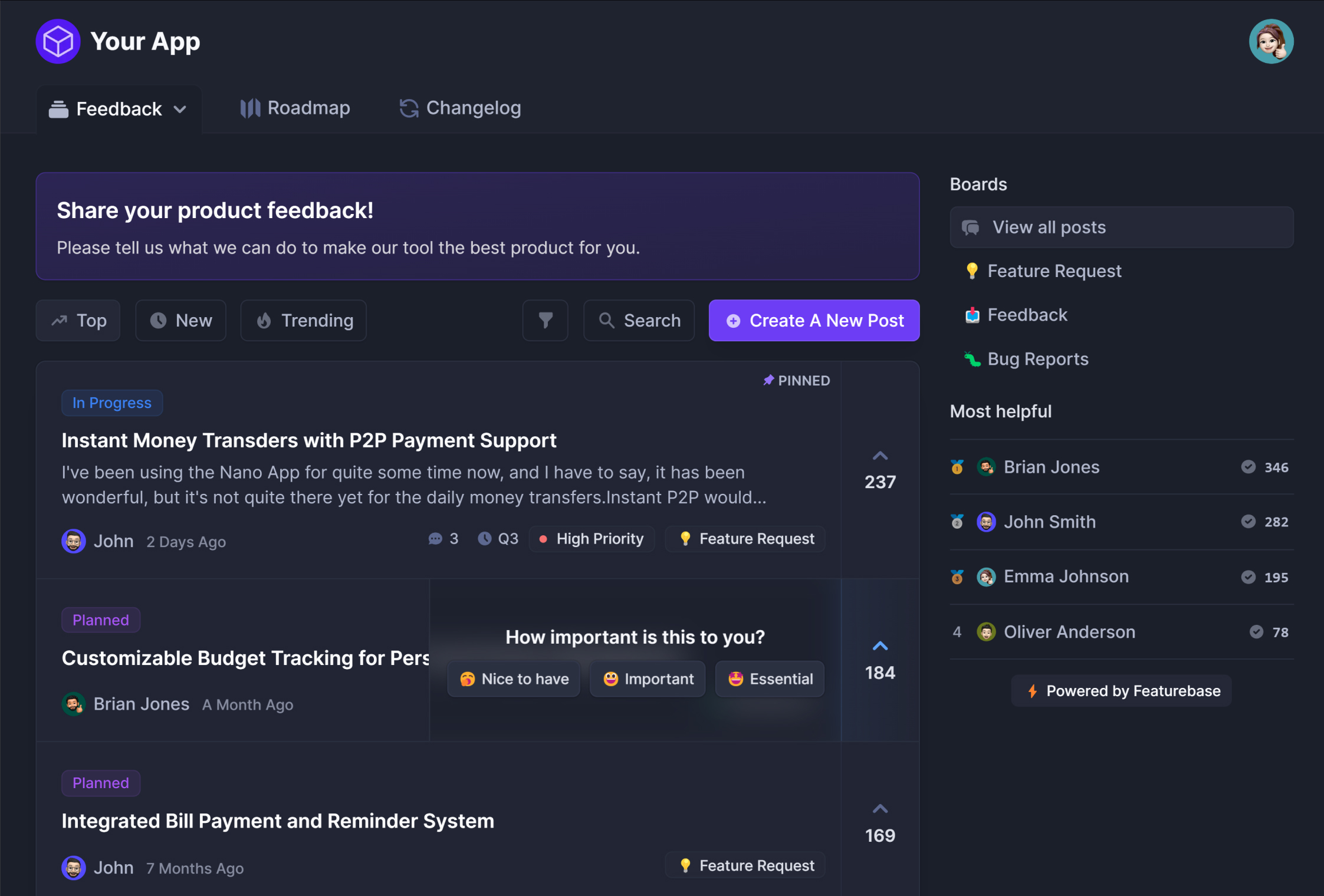
Collecting and managing user feedback is incredibly easy with the proper tools and methods.
Next, we'll give you an overview of how you could start capturing different types of user feedback today:
1. In-app feedback
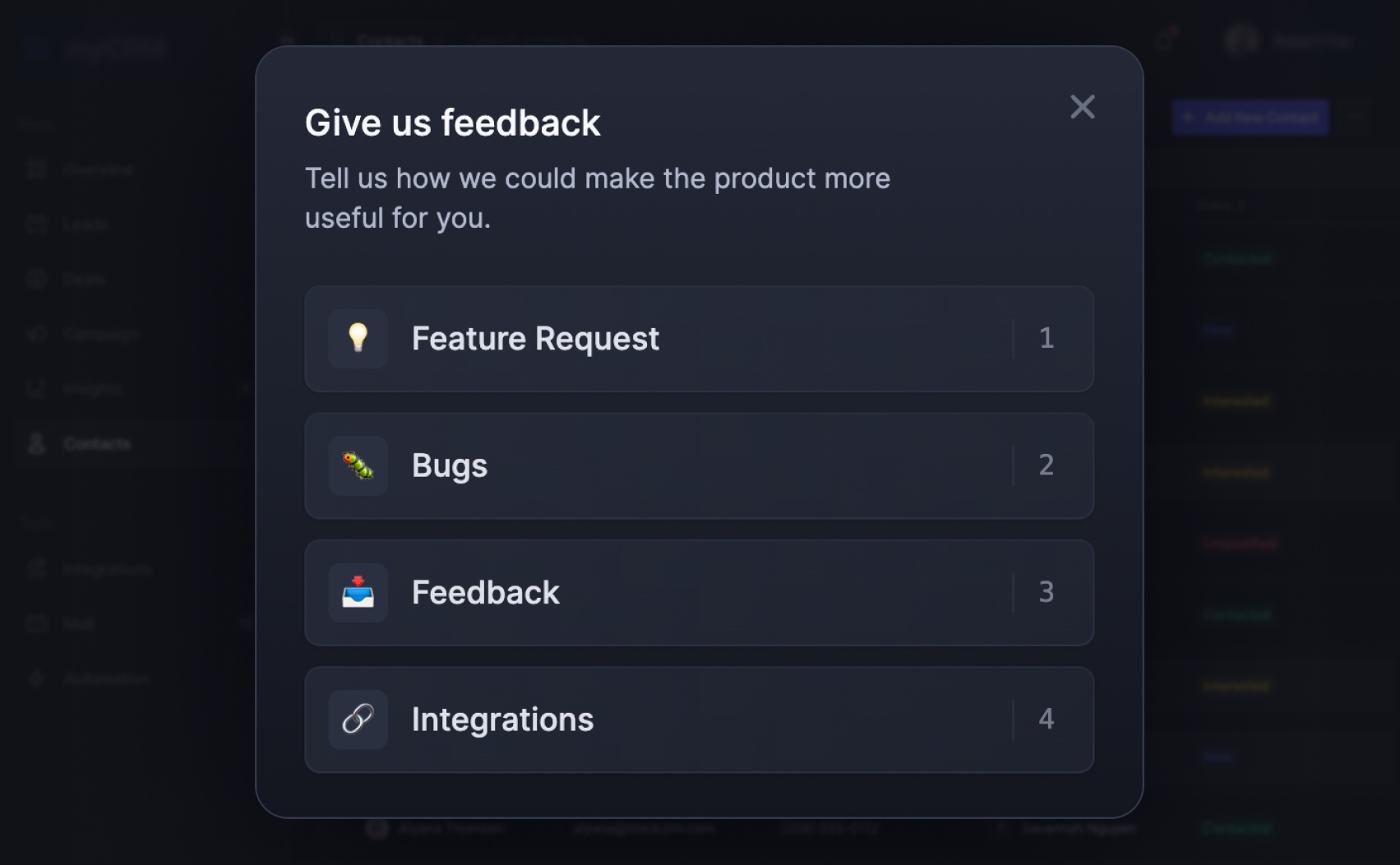
The advantage of in-app feedback tools is that they provide a frictionless experience for your users when submitting feedback.
They don't have to visit yet another website but can do it all directly from your own dashboard.
It also provides a unique opportunity to capture bug reports where they happen. Featurebase, for example, offers a screenshot-reporting tool that allows users to highlight problematic areas of the website.
In-app feedback tools can also be used to capture NPS scores to measure the happiness of your customers.
2. Public feedback portals

Public feedback portals are online platforms where users can submit their feedback, including feature requests, bug reports, and general suggestions.
These portals often allow other users to vote on submitted ideas, helping you prioritize which features or fixes are in most demand.
Public portals are a great way to create a community around your product and showcase transparency, as users can see what others are suggesting and how the company responds.
With Featurebase or other feature voting tools, you can create a customizable public suggestion portal in a few minutes to level up your user feedback collection.
3. Email surveys
Email surveys are a direct and effective way to gather user feedback, especially for capturing NPS scores or CSAT.
By sending surveys directly to your users' inboxes, you can target specific segments of your customer base or reach out following significant interactions, such as a purchase or customer support experience.
Email surveys benefit from higher personalization and can achieve good response rates if they are concise and sent at the right time.
Tools like SurveyMonkey or Google Forms make it easy to create and send out these surveys.
4. Forms

Forms embedded on your website or shared via links provide a simple yet effective way to gather user feedback.
They can be tailored for various purposes, from general feedback and contact forms to specific surveys about user experience or new feature requests.
The key to success with forms is making them accessible and easy to use.
Tools like Typeform or Google Forms offer user-friendly design options that can encourage more of your customers to share their thoughts.
By strategically placing these forms on your website, particularly on pages where users are most engaged, you can collect valuable insights at the moment users are most motivated to provide them.
5. Listening on social media

Social media platforms are not just channels for marketing and communication - they are also great channels for user feedback and new ideas.
Listening on social media involves monitoring mentions of your brand, product, or service across platforms like Twitter, Facebook, and Instagram to catch and respond to user feedback in real-time.
Tools like Sprout Social or Buffer offer social listening features that can track brand mentions and keywords, making it easier for you to engage with your audience and gather insightful feedback.
By being active and responsive on social media, you not only collect valuable feedback but also demonstrate your commitment to customer satisfaction and service.
When to collect user feedback?
Collecting user feedback is not just about the methods you use, it's a lot about timing.
The right timing can make a significant difference in the quality and quantity of feedback you receive.
Here are key moments when collecting user feedback can be particularly valuable:
1. After Onboarding
Once a user has completed the onboarding process, it's the perfect time to ask for their initial impressions.
This feedback can help you understand how intuitive and helpful your onboarding experience is and where users might be facing difficulties.
2. Following Major Updates or Releases
After launching a new feature or a significant update, gather user feedback to measure what your users think about it and what else they want to see.
With a tool like Featurebase, this can be very easily done by publishing changes to a public changelog page and showcasing them via in-app widgets.
Each update you publish also has a comment section and reactions for users to leave their thoughts.
3. During Customer Support Interactions
After a customer support session, asking for feedback on the experience can provide insights into how well your support team is meeting user needs and where there might be room for improvement in your support processes.
4. At Regular Intervals
Setting up regular intervals for collecting feedback, such as quarterly or annually, helps you track changes in user satisfaction over time.
This can be particularly useful for long-term product development and customer satisfaction strategies.
5. When a User Cancels or Downgrades
Understanding why a user decides to cancel or downgrade their service can provide critical insights into potential issues with your product or areas where expectations were not met.
This feedback is invaluable for reducing churn and improving the overall user experience.
Tools like ChurnKey help you set up a popup that triggers when customers are canceling their plan to ask any follow-up questions.
6. After User Milestones
Collect feedback after users reach certain milestones with your product, such as completing a project, achieving a goal, or using the product for a set period.
This helps you understand the value users are getting from your product and can highlight success stories and areas for enhancement.
7. During Beta Testing
Beta testing phases are ideal for collecting detailed feedback on new features or products before a full release.
This feedback can guide final adjustments and help ensure that the new release will meet user expectations.
Timing your feedback collection strategically around these moments ensures that you're not only gathering feedback when it's most relevant but also when users are most likely to have meaningful insights to share. T
his approach leads to better and more actionable feedback that can drive meaningful improvements to your product and user experience.
Conclusion
In conclusion, collecting, analyzing, and implementing user feedback is a game-changer for any business.
It helps you see your product through your users' eyes, revealing both its strengths and areas for improvement.
With different types of feedback, from feature requests to NPS scores, you can get a great understanding of how to make your product not just good, but something magical.
But remember, the best products are built not just on great ideas but on listening to and acting upon user feedback.
Tools like Featurebase make this easier by offering in-app feedback collection, public feedback portals, and more, helping you close the feedback loop effectively.
Whether you're collecting feedback after a major update, during customer support interactions, or at any other key moment in the user journey, the goal is clear: keep improving and keep your users at the heart of everything you do.
Manage all your user feedback with Featurebase today →
FAQ: User Feedback
Why is user feedback important?
User feedback is crucial because it provides direct insights from your users about what's working well and what needs improvement in your product or service. It helps in enhancing user satisfaction, guiding product development, building customer loyalty, and fostering innovation.
What are the main types of user feedback?
The main types include feature requests, Net Promoter Score (NPS), bug reports, new release feedback, and Customer Satisfaction Score (CSAT). Each type offers unique insights that can help improve your product or service.
How can I collect user feedback effectively?
You can use various methods like in-app feedback tools, public feedback portals, email surveys, forms on your website, and listening on social media. Tools like Featurebase can streamline this process, making it easier to collect and manage feedback.
When is the best time to collect user feedback?
Key moments include after onboarding, following major updates or releases, during customer support interactions, at regular intervals, when a user cancels or downgrades, after user milestones, and during beta testing phases.
How do I encourage users to provide feedback?
Make the process as easy and frictionless as possible. Use incentives where appropriate, clearly explain how their feedback will be used, and show users that their input leads to tangible improvements.
How can I ensure that the feedback I collect is useful?
Ask specific, guided questions that are relevant to your goals. Segment your users to target feedback requests appropriately, and use a mix of qualitative and quantitative feedback methods to get a full picture.
The simple feedback tool with feature voting for your customer feedback. Built-in the 🇪🇺.
© 2024 Featurebase. All rights reserved.



